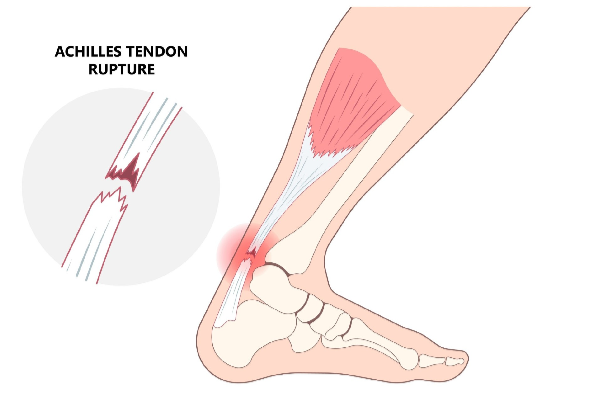On April 12, 2013, weeks before the LA Lakers clinched their playoff berth and tied the second best record in the NBA, one of the greatest basketball players to ever play the game, the late and great Kobe Bryant, ruptured his Achilles tendon as he drove to the basket against Harrison Barnes, the former guard of the Golden State Warriors. As a fan of the game and of Kobe, I think this was the injury that changed the way that Kobe played the remainder of his career. Like so many athletes who’ve suffered from a ruptured achilles tendon prior to Kobe, their recovery was brutal. Once these former athletes returned to their respective sports, their productivity and performance declined. However, in that very moment of Kobe’s career, I witnessed the real meaning of “Mamba Mentality” during his recovery and return to the NBA in 7 short months, which was a record. He continued to perform and produce, but not at the level he was prior to his achilles injury.
To learn about an achilles tendon rupture, read the information below.
Achilles Tendon Rupture
● The achilles tendon is a band of tissue that connects the calf muscles to the heel of the bone.
● The achilles tendon, also known as “the heel cord,” helps to raise the heel off the ground to facilitate walking.
● The most common tendon rupture in the lower extremity
● Occurs mostly in adults in their 30s-50s
○ Occurs in active individuals, athletes, and weekend warriors
● Presents with a sudden onset of pain
● Snapping and popping is heard at the site of injury
● Sensation feels like “being kicked” in the lower part of the leg
● Often misdiagnosed as an ankle sprain in 20-25% of patients
Causes
● Sudden plantar flexion (pushing down like you’re pressing on the gas pedal) of the foot
● Direct trauma
● Long-standing tendinopathy (inflammation of the tendon)
● Intratendinous degenerative conditions
● Sports (diving, tennis, basketball, track, cyclists, runners, volleyball players, and gymnasts)
● When the ankle is subject to extreme pronation
** There are also medical/health causes associated with achilles tendon injuries, but I want to focus on sports injuries.
Assessment
● The general practitioner, physician, or surgeon will examine the foot and ankle, feeling for a defect in the tendon that suggests a tear.
● Thompson Test:
○ Range of motion and muscle strength will be evaluated and compared to the uninjured foot and ankle.
○ If the Achilles tendon is ruptured, the patient will have less strength in pushing down (as on a gas pedal) and will have difficulty rising on the toes.
○ The injured side of the foot will not move if there is a fresh rupture of the Achilles tendon. This is because the calf muscle (gastrocnemius-soleus complex) is no longer connected to the foot.
Evaluation
● X Rays are done in traumatic situations to rule out (r/o) fractures.
● Ultrasound or magnetic resonance imaging (MRI) to diagnose and confirm an achilles tendon rupture.
Treatment
● Initially: Rest, elevation, pain control, and functional bracing
● Nonsurgical:
○ Nonoperative treatment in a cast, cast boot, or splint with the foot in plantar flexion with or without early physiotherapy.
○ Surgical:
■ Treatment includes open, minimally invasive, percutaneous repair of the tendon.
■ Rupture rates are lower with surgical treatment, but surgical treatment is associated with higher rate of infections
● All patients require physical and orthopedic consults to help strengthen the muscle and improve range of motion (ROM) of the ankle.
● Rehab is necessary to regain maximal ankle function.
Prognosis
● Most are excellent
● Non-athletes may have some residual deficits like reduced ROM
● Most athletes are able to resume their previous sporting activity without any limitations.

References
Boyd, R. P., Dimock, R., Solan, M. C., & Porter, E. (2015). Achilles tendon rupture: how to avoid missing the diagnosis. The British journal of general practice : the journal of the Royal College of General Practitioners, 65(641), 668–669. https://doi.org/10.3399/bjgp15X688069
Pepermpron. (2022). [Illustration]. Achilles tendon rupture injury Feet calf test range of motion
slight ache problem limb Thompson Simmonds. https://www.shutterstock.com/image-vector/achilles-tendon-rupture-injury-feet-calf-2163445409
Saglimbeni, A. (2020). Achilles Tendon Injuries. https://emedicine.medscape.com/article/309393-overview
